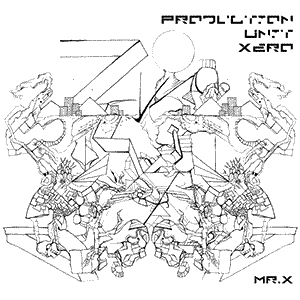“Ambient 2: The Plateaux of Mirror” by Harold Budd and Brian Eno – Album Review

Few albums hold as revered a place as “Ambient 2: The Plateaux of Mirror,” a collaboration between avant-garde composer Harold Budd and ambient pioneer Brian Eno. Released in 1980, this album marks the second installment in Eno’s Ambient series, which sought to introduce listeners to music that could be actively listened to with attention or as easily ignored, depending on the listener’s choice. Unlike its predecessor, “Ambient 1: Music for Airports,” which was largely Eno’s solo project aimed at defusing the tense, anxious atmosphere of airport terminals, “Ambient 2” ventures into more introspective and subtly textured territories, courtesy of Budd’s delicate piano work and Eno’s mastery of atmospheric soundscapes.
Crafting Soundscapes
The collaboration between Harold Budd and Brian Eno on “Ambient 2” is a meeting of minds that seems almost fated, given their respective contributions to the ambient genre. Budd’s piano playing, characterized by its use of soft pedal and sustained notes that blur into each other, creates a sense of ethereal calm. Eno’s treatments, which include tape loops, echo, and reverb, transform these simple piano lines into lush, immersive environments that envelop the listener. The album’s sound is not just music; it’s an exploration of texture and timbre, where each note seems to hold a depth of its own, inviting introspection and contemplation.
Track by Track
From the opening notes of “First Light” to the closing echoes of “Wind in Lonely Fences,” “Ambient 2” is a journey through serene landscapes and reflective moods. Each track stands out for its ability to evoke imagery and emotion through minimalistic means. “Steal Away,” for instance, combines hauntingly slow piano melodies with ethereal synth backgrounds, creating a sense of drifting through a dream. “The Plateaux of Mirror” itself is another highlight, where the interplay between Budd’s piano and Eno’s ambient textures suggests a vast, reflective surface, both beautiful and slightly melancholic.
The Emotional Spectrum
What makes “Ambient 2” particularly striking is its range of emotional evocations. Despite the inherent tranquility of the music, there’s a profound depth of feeling beneath the surface. Tracks like “An Arc of Doves” and “Not Yet Remembered” manage to convey a sense of longing and nostalgia without a single word, relying solely on the emotive power of sound. This emotional breadth challenges the listener to engage with the album on a deeply personal level, using the music as a backdrop for introspection and emotional exploration.
The Listening Experience
Listening to “Ambient 2” is an experience that defies passive engagement. While the album certainly fits Eno’s original description of ambient music as being as ignorable as it is interesting, to fully appreciate its depths, one must be willing to immerse oneself in its layers. The album rewards close listening with its intricate details—subtle shifts in tone, the gentle decay of piano notes, and the quiet interplay of background textures. It’s an album that can transform the space it occupies, coloring moments of solitude, study, or relaxation with its unique atmosphere.
Legacy and Influence
The impact of “Ambient 2: The Plateaux of Mirror” on the ambient music genre and beyond is undeniable. Its release not only solidified the foundation of ambient music as a recognizable genre but also inspired countless artists and composers to explore the potential of music as an atmospheric and emotional force. The album’s emphasis on mood and texture over traditional structure and rhythm has echoed through the years, influencing genres as diverse as post-rock, electronic, and even soundtrack composition.
Moving Beyond Genres
While it’s easy to categorize “Ambient 2” within the ambient genre, the album transcends simple genre definitions. Its appeal lies not just in its serene soundscapes but in its ability to act as a mirror to the listener’s inner life. This quality of reflection and introspection makes it a timeless piece of art, one that continues to find relevance and resonance years after its release.
In an era where music often clamors for attention with ever-increasing volume and complexity, “Ambient 2: The Plateaux of Mirror” stands as a testament to the power of subtlety and simplicity. Harold Budd and Brian Eno’s collaboration is not just a landmark in the history of ambient music but a milestone in the broader landscape of modern music. It invites listeners to pause, listen deeply, and find beauty in the spaces between notes, proving that sometimes, the quietest sounds can leave the most profound impact.


